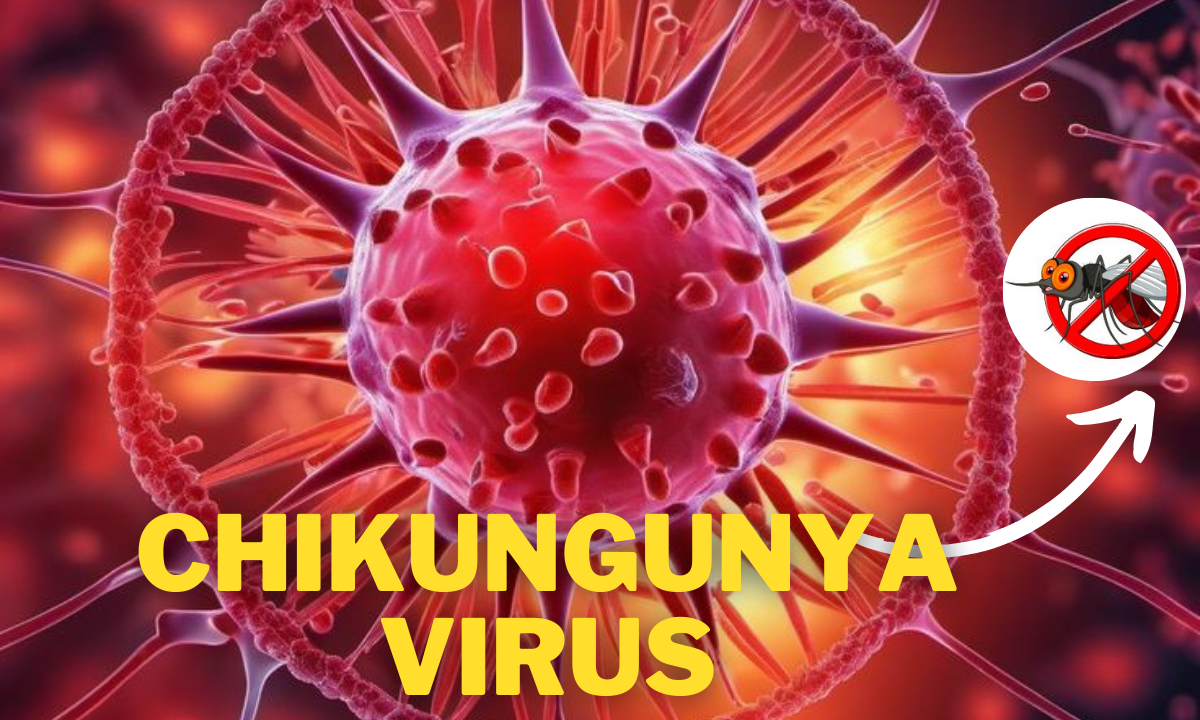Chikungunya Virus : Busting Myths and Sharing Facts
Outline
- Introduction
- Overview of Chikungunya Virus
- Importance of Understanding the Virus
- What is Chikungunya Virus ?

- Definition and Origins
- Transmission and Spread
- Symptoms of Chikungunya Virus
- Early Signs
- Severe Symptoms
- Long-term Effects
- Diagnosis and Treatment
- How Chikungunya Virus is Diagnosed
- Available Treatments
- Home Remedies
- Prevention of Chikungunya

- Mosquito Control
- Personal Protective Measures
- Community Efforts
- Common Myths About Chikungunya
- Myth: Chikungunya is Always Fatal
- Myth: Only Affects Tropical Areas
- Myth: No Cure Means No Hope
- Facts About Chikungunya
- Fact: Recovery is Possible
- Fact: It Can Occur in Temperate Regions
- Fact: Research and Vaccine Development
- Impact of Chikungunya on Society
- Economic Burden
- Healthcare System Strain
- Psychological Effects
- Global Efforts to Combat Chikungunya Virus
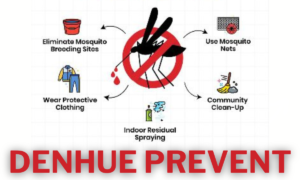
- WHO Initiatives
- Local Government Actions
- NGO Contributions
- Chikungunya vs. Other Mosquito-Borne Diseases
- Comparison with Dengue
- Comparison with Zika
- Unique Characteristics
- Personal Stories and Experiences
- Patient Testimonials
- Healthcare Worker Perspectives
- Community Stories
- The Role of Education in Preventing Chikungunya Virus
- Awareness Campaigns
- School Programs
- Media Influence
- Future of Chikungunya Virus Research
- Current Studies
- Promising Developments
- Challenges in Research
- Chikungunya in the Age of Climate Change

- Impact of Climate on Mosquito Habitats
- Predicted Spread Patterns
- Mitigation Strategies
- Conclusion
- Recap of Key Points
- Final Thoughts
- FAQs
- What is the incubation period of Chikungunya Virus ?
- Can you get Chikungunya Virus more than once?
- How long does immunity last after infection?
- Are there any long-term disabilities associated with Chikungunya Virus ?
- What should travelers know about Chikungunya Virus ?
Introduction
Chikungunya virus—a name that sounds exotic and dangerous, but what do we really know about it ? This mosquito-borne illness often hits the headlines but is surrounded by myths and misconceptions. Let’s cut through the noise and uncover the facts about Chikungunya. Discover what Chikungunya virus is, its symptoms, and how to protect yourself. Stay informed and stay healthy, Chikungunya virus, a mosquito-borne pathogen, spreads primarily through the bites of infected Aedes mosquitoes. These mosquitoes, notably Aedes aegypti and Aedes albopictus, are responsible for the transmission of various viral infections, including dengue and Zika virus. Understanding the transmission dynamics of the Chikungunya virus is crucial in implementing effective preventive measures.
What is Chikungunya Virus ?
Definition and Origins
Chikungunya Virus is a viral disease transmitted to humans by infected mosquitoes, primarily Aedes aegypti and Aedes albopictus. First identified during an outbreak in Tanzania in 1952, the name “Chikungunya” derives from a Makonde word meaning “to become contorted,” reflecting the severe joint pain sufferers experience.
Transmission and Spread
Chikungunya Virus spreads through mosquito bites. When a mosquito feeds on a person infected with the virus, it becomes a carrier. The virus spreads when the infected mosquito bites another person. This transmission method makes controlling mosquito populations crucial in managing the disease.
Symptoms of Chikungunya
Early Signs
Usually, 4–7 days after being bitten by an infected mosquito, symptoms start to show.. Early signs include high fever and severe joint pain, often accompanied by muscle pain, headache, nausea, fatigue, and rash.
Severe Symptoms
While most people recover within a week, joint pain can persist for months or even years in some cases. Severe complications are rare but can include eye, neurological, and heart problems.
Long-term Effects
For some, the debilitating joint pain can become chronic, lasting for years and impacting quality of life. The prolonged fatigue and pain can affect daily activities and work productivity.
Diagnosis and Treatment
How Chikungunya Virus is Diagnosed: Diagnosis is typically based on symptoms and recent travel history. Blood tests can confirm the presence of Chikungunya virus or antibodies in the body, helping to distinguish it from other illnesses with similar symptoms, like dengue or Zika.
Available Treatments
There’s no specific antiviral treatment for Chikungunya Virus . Management focuses on relieving symptoms—painkillers and anti-inflammatory drugs can help reduce joint pain and fever. Hydration and rest are also important.
Home Remedies
Many patients find relief through natural remedies such as turmeric and ginger, known for their anti-inflammatory properties. Light exercises and stretching can also help maintain joint mobility and reduce stiffness.
Prevention of Chikungunya Virus
Mosquito Control Eliminating mosquito breeding sites is key. This includes removing standing water in containers, regularly changing water in birdbaths, and using larvicides in water storage tanks.
Personal Protective Measures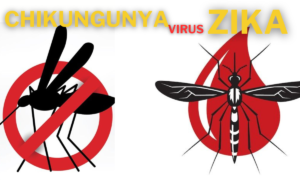
Wearing long-sleeved clothing, using insect repellent, and sleeping under mosquito nets are effective ways to avoid mosquito bites. Screens on windows and doors can also help keep mosquitoes out of homes.
Community Efforts
Community-wide initiatives, such as coordinated spraying and public education campaigns, play a crucial role in controlling mosquito populations and preventing outbreaks.
Common Myths About Chikungunya Virus
Myth: Chikungunya Virus is Always Fatal Contrary to popular belief, Chikungunya Virus is rarely fatal. Most people recover fully, although some may experience prolonged joint pain.
Myth: Only Affects Tropical Areas
While more common in tropical and subtropical regions, outbreaks have occurred in temperate areas, including parts of Europe and the Americas, due to the adaptability of the mosquito vectors.
Myth: No Cure Means No Hope
Although there’s no specific cure, supportive treatments effectively manage symptoms, and most patients recover fully. Ongoing research aims to develop vaccines and better treatments.
Facts About Chikungunya
Fact: Recovery is Possible
The majority of Chikungunya patients recover fully. Persistent joint pain can be managed, and many people regain their normal lives within weeks to months.
Fact: It Can Occur in Temperate Regions
The adaptability of the Aedes mosquitoes means Chikungunya Virus can spread to new areas, including temperate zones, highlighting the need for global vigilance.
Fact: Research and Vaccine Development
Significant progress has been made in understanding Chikungunya, and several vaccine candidates are in various stages of development, offering hope for better prevention in the future.
Impact of Chikungunya on Society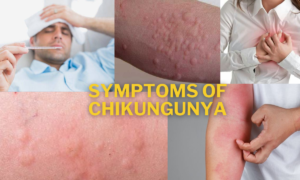
Economic Burden
Chikungunya outbreaks can strain healthcare systems and economies, particularly in affected regions. Costs include medical care, lost productivity, and vector control efforts.
Healthcare System Strain
During outbreaks, healthcare facilities can become overwhelmed with patients seeking treatment for severe joint pain and other symptoms, impacting the care of other conditions.
Psychological Effects
Chronic pain and fatigue from Chikungunya can lead to psychological distress, including anxiety and depression, further complicating recovery.
Global Efforts to Combat Chikungunya
WHO Initiatives
The World Health Organization (WHO) supports countries in outbreak response, surveillance, and research. Their efforts aim to improve prevention, control, and treatment strategies.
Local Government Actions
Governments implement mosquito control programs, public awareness campaigns, and emergency response plans to manage and prevent Chikungunya outbreaks.
NGO Contributions
Non-governmental organizations (NGOs) play a crucial role in education, research funding, and providing support to affected communities, particularly in resource-limited settings.
Chikungunya vs. Other Mosquito-Borne Diseases
Comparison with Dengue
Both diseases are transmitted by the same mosquitoes and share similar symptoms like fever and joint pain. However, dengue is more likely to cause severe complications such as hemorrhagic fever.
Comparison with Zika
Zika and Chikungunya both cause joint pain and fever, but Zika is particularly dangerous for pregnant women due to its link to birth defects. Chikungunya’s joint pain is usually more severe and prolonged.
Unique Characteristics
Chikungunya is distinguished by its intense joint pain and potential for chronic arthritis, which sets it apart from other mosquito-borne illnesses.
Personal Stories and Experiences
Patient Testimonials
Many patients describe Chikungunya as a debilitating experience, with joint pain being the most challenging symptom. Stories of perseverance and recovery provide hope and insight into the disease.
Healthcare Worker Perspectives
Healthcare workers on the front lines share their experiences treating Chikungunya patients, highlighting the challenges and successes in managing outbreaks.
Community Stories
Communities affected by Chikungunya often come together to support each other, sharing resources and strategies to combat the disease and its impacts.
The Role of Education in Preventing Chikungunya (continued)
Media Influence
Media platforms play a crucial role in disseminating accurate information about Chikungunya, helping to dispel myths and promote preventive measures to a wide audience.
Future of Chikungunya Research
Current Studies
Researchers worldwide are investigating various aspects of Chikungunya, including its epidemiology, transmission dynamics, and potential treatments.
Promising Developments
Advancements in vaccine development and vector control methods offer hope for better prevention and control of Chikungunya in the future.
Challenges in Research
Funding constraints, logistical challenges, and the need for international collaboration pose hurdles to effective Chikungunya research and control efforts.
Chikungunya in the Age of Climate Change
Impact of Climate on Mosquito Habitats
Rising temperatures and changing precipitation patterns influence mosquito breeding habitats, potentially expanding the geographic range of Chikungunya.
Predicted Spread Patterns
Climate models predict an increase in the spread of Chikungunya to new regions, including previously unaffected areas, posing challenges for public health systems worldwide.
Mitigation Strategies
Adapting mosquito control strategies and strengthening healthcare systems in vulnerable regions are essential steps in mitigating the impact of Chikungunya in a changing climate.
Conclusion
Chikungunya is a viral disease with significant implications for public health, economies, and individuals worldwide. By busting myths and sharing facts, we can empower communities to take proactive measures to prevent and control the spread of this mosquito-borne illness. With continued research, education, and global collaboration, we can work towards a future where Chikungunya is no longer a major threat to human health.
FAQs
- What is the incubation period of Chikungunya ?

- The incubation period, or the time between infection and the onset of symptoms, is typically 2 to 12 days.
- Can you get Chikungunya more than once ?
- While rare, reinfection with Chikungunya is possible, although subsequent infections tend to be milder.
- How long does immunity last after infection ?
- Natural immunity after Chikungunya infection is thought to be long-lasting, providing protection against future bouts of the disease.
- Are there any long-term disabilities associated with Chikungunya ?
- Chronic joint pain and arthritis-like symptoms can persist for months or even years in some individuals, impacting mobility and quality of life.
- What should travelers know about Chikungunya ?
- Travelers to areas where Chikungunya is endemic should take precautions to prevent mosquito bites, such as using insect repellent and wearing protective clothing.
- What are some interesting facts about chikungunya virus ?
- The infection In Tanzania, the virus was initially discovered in 1953.
- The primary reservoir, or source, of the chikungunya virus is humans.
- The virus belongs to the Togaviridae family, genus Alphavirus, and is a single-stranded positive-sense RNA enclosed virus.
- The chikungunya virus belongs to three main genetically different lineages.
- Can we drink milk in chikungunya?

- `Drinking lots of liquids, such as warm water, soups, and broths, might hasten the body’s removal of the virus. Meat: Fatty fish, such as tuna, salmon, sardine, Mackerel, and trout, help lower inflammation. milk and dairy products: cow’s milk is an effective medication that relieves a number of Chikungunya symptoms.
- Who is at risk of chikungunya ?
- Neonates exposed intrapartum, persons over 65, and those with existing medical disorders (such as diabetes, heart disease, or hypertension) have all been recognized as having a higher risk for more severe disease. Chikungunya’s acute symptoms usually go away in seven to ten days.
- Chikungunya virus symptoms ?
- Fever and excruciating, sometimes incapacitating joint pain are the main symptoms of chikungunya; other symptoms include joint swelling, muscular soreness, headache, nausea, exhaustion, and rash. As of right now, there is no recognized vaccination or targeted therapy for chikungunya virus infections.
- Chikungunya prevention ?

- Since 2019, there have been no reports of locally acquired chikungunya virus disease (chikungunya) in any U.S. states or territories. If vaccination is advised for you, the greatest defense against chikungunya is to avoid mosquito bites and to get vaccinated before departing.
- Chikungunya virus treatment ?
- Since 2019, no cases of locally acquired chikungunya virus disease have been documented in any of the states or territories of the United States. Preventing mosquito bites and receiving a vaccination prior to travel, if advised, are the most effective ways to avoid contracting chikungunya.
- Chikungunya mosquito name ? Chikungunya Virus name ?
- Mosquitoes are the primary carriers of the Chikungunya virus; these mosquitoes, Aedes (Stegomyia) aegypti and Aedes (Stegomyia) albopictus, are also capable of spreading the dengue and Zika viruses.. These mosquitoes bite primarily during daylight hours
- Causes of chikungunya virus ?
- People can contract the chikungunya virus by being bitten by an infected mosquito. Fever and joint discomfort are the most typical signs and symptoms of infection. Additional signs and symptoms could be rash, headache, joint swelling, or muscle soreness.
- Chikungunya virus disease ?
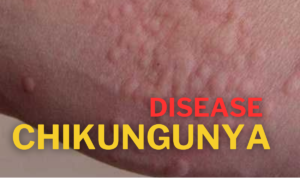
- People contract the chikungunya virus through mosquito bites. Fever and joint discomfort are two of the most typical signs of infection. Headache, aches in the muscles, swollen joints, and rashes are some more symptoms.
- Chikungunya virus family ?
- The Chikungunya virus (CHIKV) is an alphavirus carried by arthropods and a member of the Togaviridae family, which is spread by Aedes mosquitoes.
Some Question & Answers in Hindi
- The Chikungunya virus (CHIKV) is an alphavirus carried by arthropods and a member of the Togaviridae family, which is spread by Aedes mosquitoes.
- Chikungunya virus treatment in hindi ?
- जैसा कि एक वायरल इंफेक्शन के कारण होता है, चिकनगुनिया के लिए कोई विशेष टीका या दवा नहीं है। अन्य मामलों में रोगी, सप्ताहभर में ठीक हो जाता है। लेकिन, जोड़ों में दर्द की समस्या कुछ महीनों तक बनी रह सकती है। चिकनगुनिया के प्राथमिक उपचार के लिए सूजन, बुखार और दर्द को कम करने वाली दवाएं निर्धारित की जा सकती हैं।
- Chikungunya symptoms in hindi ?
- चिकनगुनिया एक वायरस है जो मच्छर के टुकड़े से बना है। अधिकांश लोगों में काटने के तीन से सात दिनों के भीतर बुखार और जोड़ों में दर्द जैसे लक्षण विकसित हो जाते हैं। उपचार लाइसेंस के प्रबंधन पर केन्द्रित है। अधिकांश लोग एक सप्ताह के भीतर बेहतर महसूस कर रहे हैं।
चिकनगुनिया से होने वाले जोड़ों के दर्द का इलाज ?
एक कपड़े या तौलिए में बर्फ़ को लपेट कर सूजन वाले क्षेत्र पर लगा दिया जाता है। दर्द की दवा का उपयोग: पेरासिटामोल या एसिटामिनोफेन से बुखार और जोड़ों के दर्द में राहत मिलती है। आप दिन में चार बार पानी के साथ दो 500 डिलैप्स की गोलियाँ तक ले लें। दिन भर में कम से कम 4 लीटर पानी पीजिए।
- चिकनगुनिया एक वायरस है जो मच्छर के टुकड़े से बना है। अधिकांश लोगों में काटने के तीन से सात दिनों के भीतर बुखार और जोड़ों में दर्द जैसे लक्षण विकसित हो जाते हैं। उपचार लाइसेंस के प्रबंधन पर केन्द्रित है। अधिकांश लोग एक सप्ताह के भीतर बेहतर महसूस कर रहे हैं।
